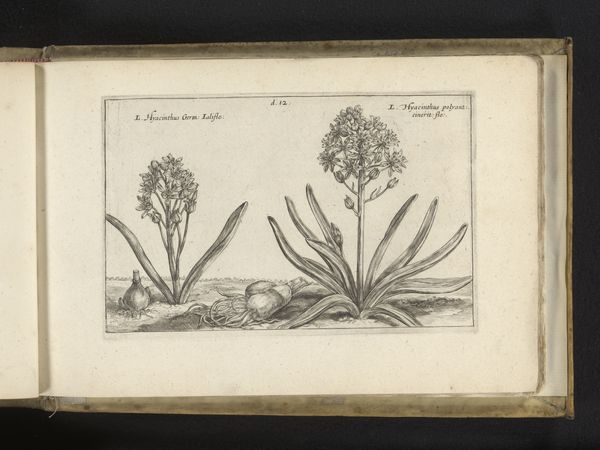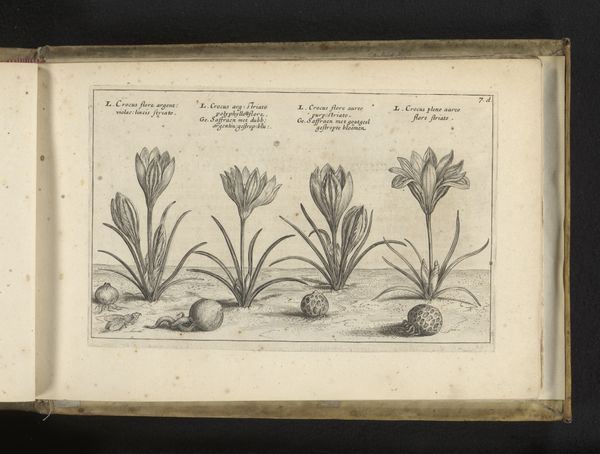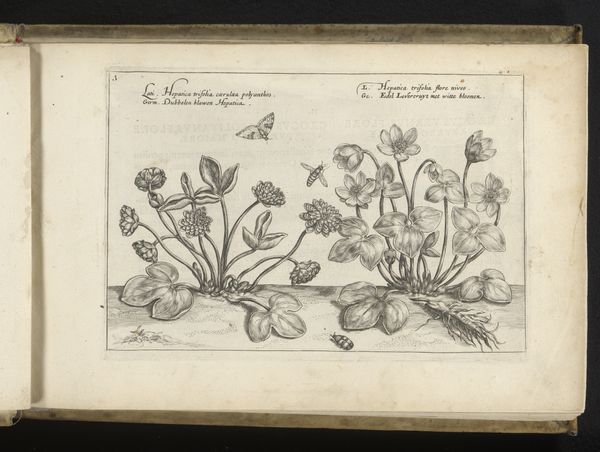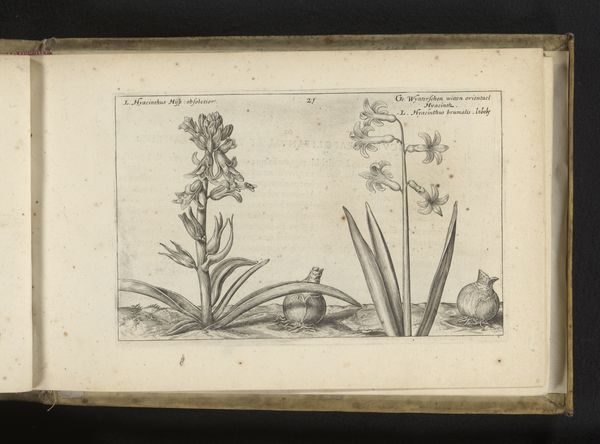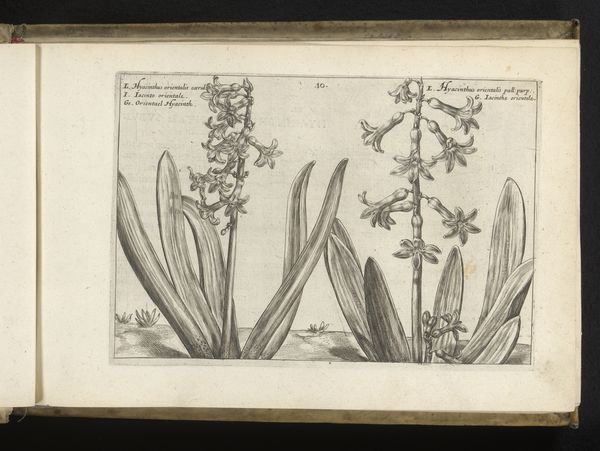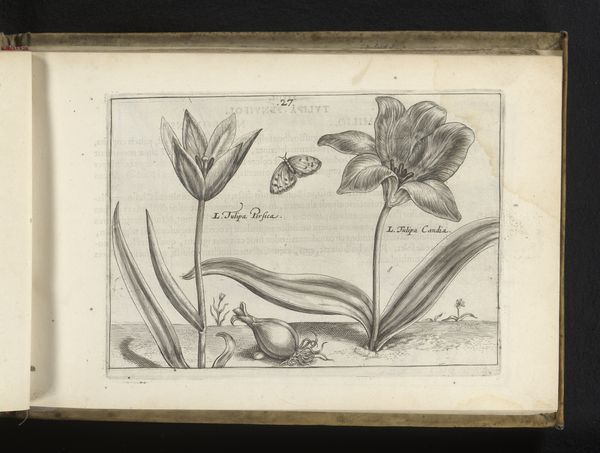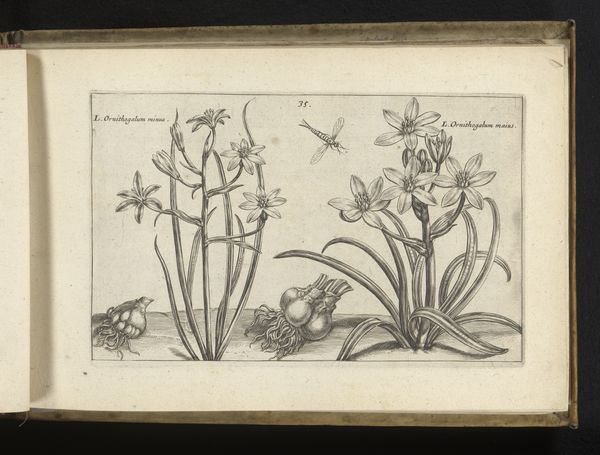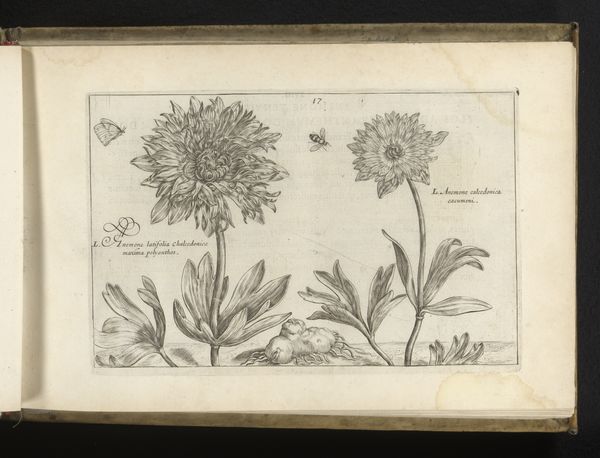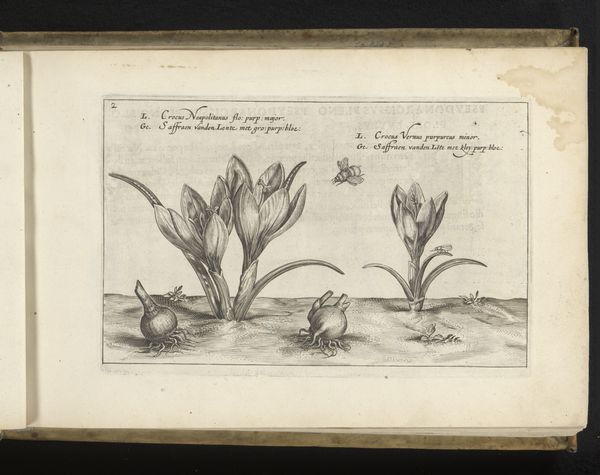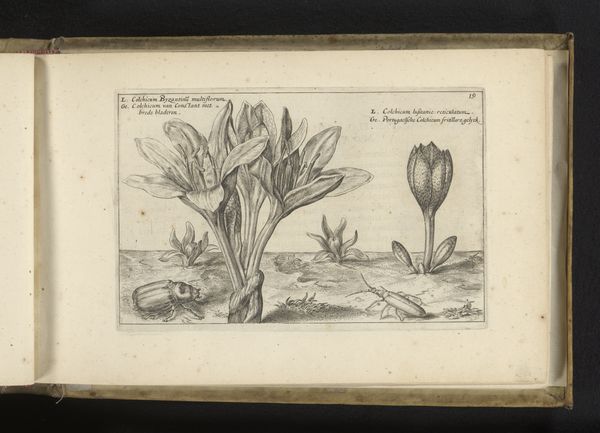
drawing, print, paper, ink, engraving
#
drawing
# print
#
flower
#
paper
#
ink
#
northern-renaissance
#
engraving
Dimensions: height 141 mm, width 210 mm
Copyright: Rijks Museum: Open Domain
Curator: Before us, we have Crispijn van de Passe the Younger’s “Twee soorten hyacinten,” or “Two Types of Hyacinths,” created in 1617. The print utilizes ink on paper and is currently held at the Rijksmuseum. Editor: It’s a serene composition, isn’t it? Almost scientifically detached, but with an underlying feeling of, I don’t know, quiet observation. Curator: The artist’s skilled engraving emphasizes the texture and form of the hyacinths. The delicate lines really bring out the different stages of bloom. What do you think that choice of medium emphasizes for this particular artist? Editor: I think it's critical to view it in light of the explosion of scientific inquiry that defined that era. Botanical studies were directly linked to colonial expansion. New commodities were discovered. Even controlled. And then circulated back into Europe. The very act of documentation using engraving becomes a part of that whole colonial mechanism. It flattens these living entities into almost collectible specimens, stripped bare to their material parts. Curator: I agree. And thinking about it from the perspective of materials – consider the paper itself, sourced and crafted. It's a testament to human labor. The printing and distribution of the print could bring botanical knowledge to a wider audience, influencing horticulture practices of the time. This affects the production of beauty and well-being. Editor: Absolutely. Also, notice that insect hovering around the left plant. The print could be seen as part of the broader artistic representation of the natural world, reflecting humanist interests and even early ecological awareness that informed natural philosophy at the time. We need to remember that, at the time, botany also related to healing. Knowledge of plants meant greater access to different forms of medical treatment, too. Curator: Considering the consumer aspect opens new possibilities of the function of art. Prints like this, depicting plants and gardens, could be purchased and exchanged between different sectors of the population and even be colored by hand. Editor: It shows us that understanding a work like this needs to involve more than just the pretty picture. Curator: Yes, the context of creation really shapes its meaning. Editor: I feel I can see the world through this little print now. Curator: Indeed! I'm left thinking about nature, commerce, and craft all entwined.
Comments
No comments
Be the first to comment and join the conversation on the ultimate creative platform.

